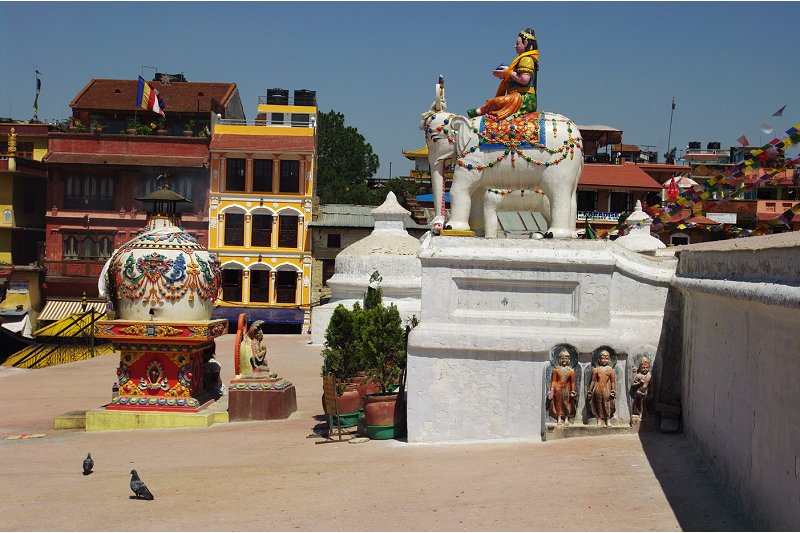 Boudhanath, Kathmandu
Boudhanath, KathmanduSource: https://commons.wikimedia.org/wiki/Category:Boudhanath#mediaviewer/File:Bouddhanath_Stupa.JPG
Author: Oshan Gurung

Author: Oshan Gurung

The Great Stupa of Boudhanath is the largest and holiest Tibetan stupa in Nepal. Its name is often also spelled Boudhnath and Baudhanath. Located 5km northeast of Kathmandu, Boudhanath has been around since medieval time. It is located on an ancient trade route between Kathmandu and Tibet. When their homeland was taken over by communist China in 1959, many Tibetans fled across the border and took refuge around Boudhanath. As a result, there are now over 50 Tibetan Gompas, or monasteries, all around Boudhanath. The Tibetan community living in the vicinity of Boudhanath totals over 16,000 people.
Boudhanath rises to a height of 36 metres. It is shaped like a massive white bubble, similar to the dagobas of Sri Lanka (see Ruwanweliseya as an example). The white dome is called the anda, or egg. It contains the relic of Kasyap, a sage venerated by both Buddhists and Hindus. Around the base of the stupa are 80 recesses. Within each recess is a Buddha sculpture.
 Visitors to Boudhanath in Kathmandu
Visitors to Boudhanath in KathmanduSource: https://commons.wikimedia.org/wiki/Category:Boudhanath#mediaviewer/File:Boudhanath_stupa_Kathmandu.jpg
Author: Solundir

Author: Solundir

The Boudhanath stupa is surmounted by a harmika, which is a sort of four-sided pedestal. Painted on each side of the harmika are pairs of eyes. Believers interpret these eyes as that of the Buddha looking down at the whole world. Above the two eyes is a smaller third eye, representing the eye of god. Below the eyes is a symbol that looks like a nose, but is in fact the Nepali number "1". Believers interpret this "1" as indicative that the path shown by Buddha is the only way out of the sufferings of the world.
Rising above the harmika is a thirteen-tiered finial, looking like a step pyramid. These are platted in copper, and unlike stupas elsewhere, the finial of Boudhanath consists of four-sided plates instead of round plates. The thirteen tiers represent the thirteen steps towards enlightenment.
Above the finale is the umbrella, similar to the hti in Burmese stupas. This represent nirvana. The pinnacle at the top of Boudhanath represents perfect knowledge.
 A shrine on the grounds of Boudhanath
A shrine on the grounds of BoudhanathSource: https://commons.wikimedia.org/wiki/Category:Boudhanath#mediaviewer/File:NP-KTM-bodhanath-stupa-detail.jpg
Author: Bgabel

Author: Bgabel

 Latest updates on Penang Travel Tips
Latest updates on Penang Travel Tips
 Map of Roads in Penang
Map of Roads in Penang
Looking for information on Penang? Use this Map of Roads in Penang to zoom in on information about Penang, brought to you road by road.
Copyright © 2003-2025 Timothy Tye. All Rights Reserved.

 Go Back
Go Back